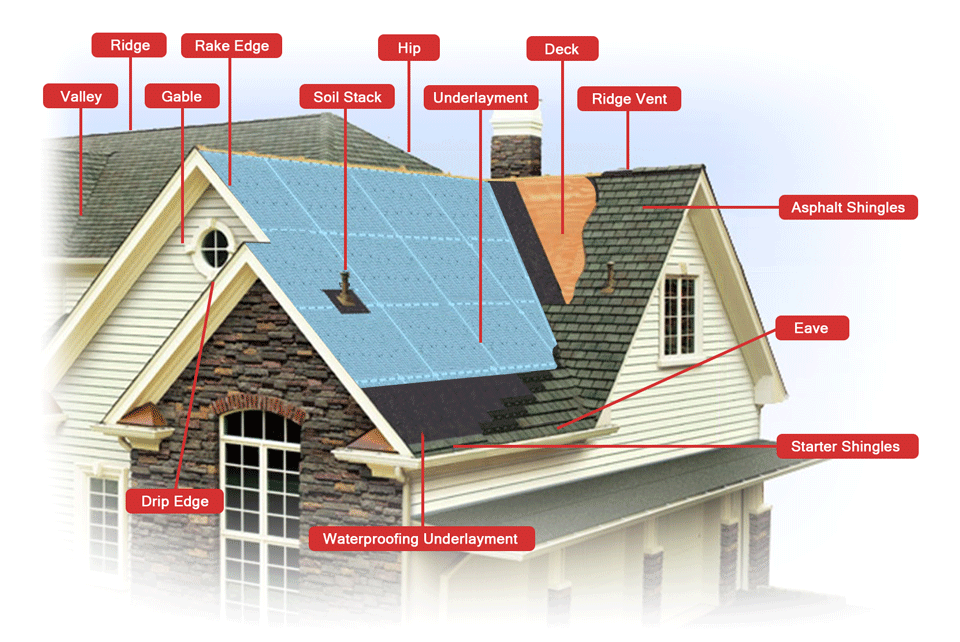In this article, we will explain 20 of the most common roofing terms that every homeowner should know.

Shingles: These are the individual overlapping pieces that cover the roof. They can be made of various materials, such as asphalt, wood, metal, or slate.
Decking: The solid surface, typically made of plywood or oriented strand board (OSB), that forms the base of the roof and provides support for the roof covering.
Underlayment: A protective layer, often made of felt or synthetic materials, installed between the decking and the shingles to provide an extra barrier against moisture and enhance roof durability.
Flashing: Metal pieces, usually aluminum or galvanized steel, used to prevent water from penetrating vulnerable areas of the roof, such as chimneys, vents, and skylights.
Ridge: The highest point where two roof slopes meet, often covered by a ridge vent to promote attic ventilation.
Valley: The lower area where two roof slopes intersect, typically requiring special flashing to direct water away from this critical juncture.
Eaves: The roof edges that extend beyond the exterior walls of the house, providing shade and protection from rainwater.
Soffit: The underside of the eaves, which is often ventilated to allow for proper airflow and prevent moisture buildup in the attic.
Fascia: The vertical board or trim located at the edge of the roof, providing a finished look and supporting the lower edge of the roof.
Gutter: A trough system attached to the edge of the roof to collect and redirect rainwater away from the building’s foundation.
Downspout: The vertical pipe or tube connected to the gutter, carrying water from the roof to the ground or a drainage system.
Pitch: The slope or steepness of the roof, typically expressed as a ratio of vertical rise to horizontal run.
Ventilation: The process of circulating air within the attic space to regulate temperature, reduce moisture buildup, and extend the life of the roof.
Drip Edge: A metal flashing installed along the roof’s edges to prevent water from seeping into the roof deck and causing damage.
Ice Dam: A ridge of ice that forms along the eaves, preventing proper drainage and potentially leading to water infiltration and damage to the roof and interior of the house.
Underlayment: A protective layer, often made of felt or synthetic materials, installed between the decking and the shingles to provide an extra barrier against moisture and enhance roof durability.
Rafter: The structural components of the roof that support the weight of the roof and transfer it to the walls of the building.
Saddle: A small area of the roof that slopes in two directions, forming a low point and diverting water away from critical areas.
Dormer: A small structure that projects from the sloping roof, usually containing a window and providing additional headroom or natural light in the attic space.
Architectural Shingles: High-quality asphalt shingles designed to mimic the appearance of more expensive roofing materials, such as wood or slate, while providing enhanced durability and performance.
Familiarizing yourself with these 20 common roofing terms will empower you to better communicate with roofing professionals, understand their recommendations, and make well-informed decisions about your roof.
If you have any questions about your roof, please give us a call or fill in the contact form below.
